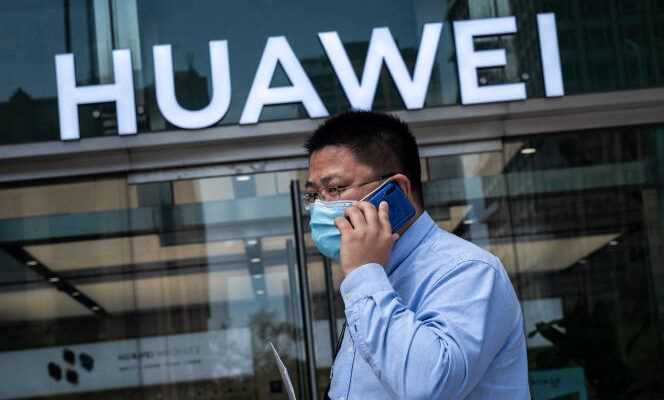Precisely a year ago, when Huawei announced its annual results, the Chinese telecommunications giant, targeted by US sanctions, had placed 2020 – with a little dramatization – under the sign of survival. He probably had not then measured the impact of the Covid-19 pandemic on the global economy. Therefore, its performance for the 2020 financial year is surprising.
On Wednesday March 31, the Shenzhen conglomerate lifted the veil on a turnover up 3.8% compared to 2019, to 891.4 billion yuan (115.5 billion euros), and a profit net up 3.2%, to 64.6 billion yuan. However, this is a significant brake on its revenue growth in 2019 (+ 19.1%)
Huawei owes much of this resistance to the crisis to its domestic market. In 2020, China contributed two-thirds of its results, which increased compared to 2019. It benefited from the brevity of the constraints linked to the health crisis and the massive deployment of 5G, the latest generation of mobile telephony, on the territory. Likewise, in the Middle Kingdom, the group was able to count on the patriotic reflex of citizens, who preferred the company’s phones to those of its American competitor Apple.
A form of failure
Huawei sees the health of the Chinese market as a source of optimism, both in the mainstream market – which “Keeps improving”, according to Ken Hu, rotating chairman of the company – only on the corporate front, more and more fond of its technologies.
Yet it is a form of failure for this group with global aims, more and more confined to its comfort zone. In all other geographic areas, the Chinese brand suffered a decline, particularly in the Europe-Middle East-Africa region, the second for the company in terms of importance. It only accounts for 20.3% of its results against 24% in 2019.
The company is investing more and more in its cloud activity, launched in 2017: it already claims second place in the sector on the Chinese market
In these countries, if the Chinese group has been excluded from the deployment of 5G, it has still been in great demand by telephone operators since the start of the pandemic. They have had to strengthen their networks to cope with the boom in digital uses. Huawei also took the opportunity to develop its business services, which experienced 23% worldwide growth over the last fiscal year.
You have 48.63% of this article to read. The rest is for subscribers only.
